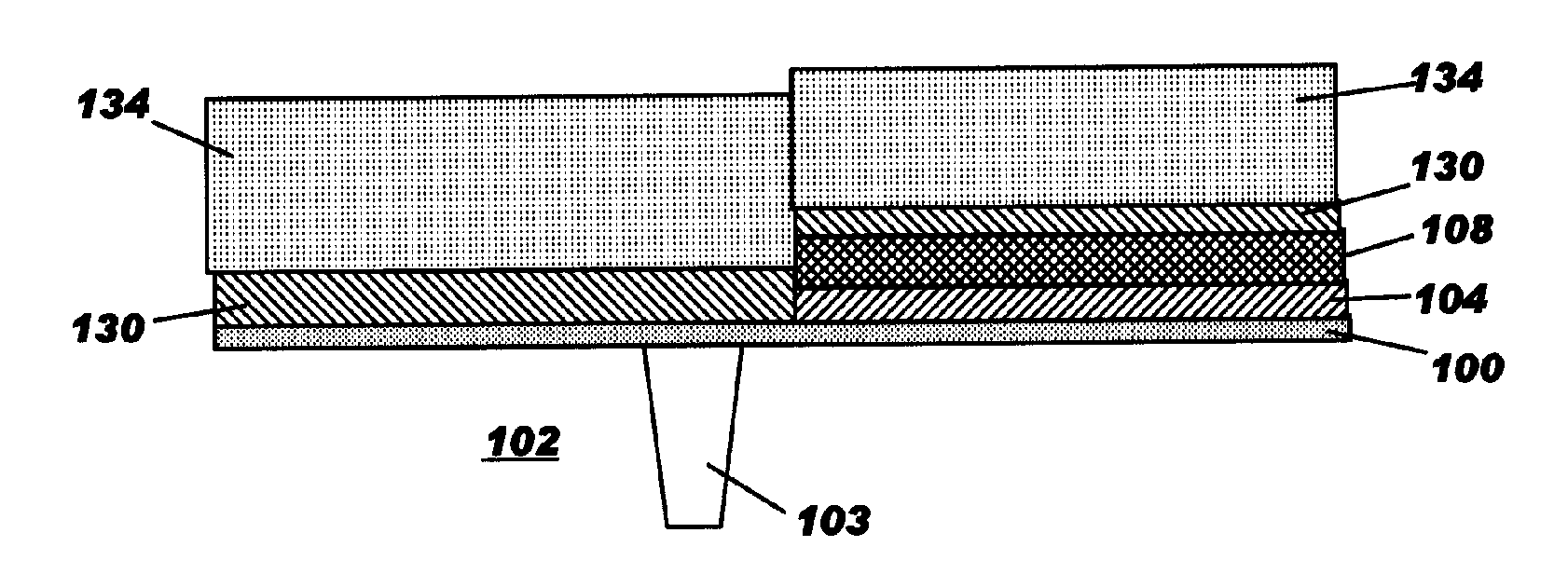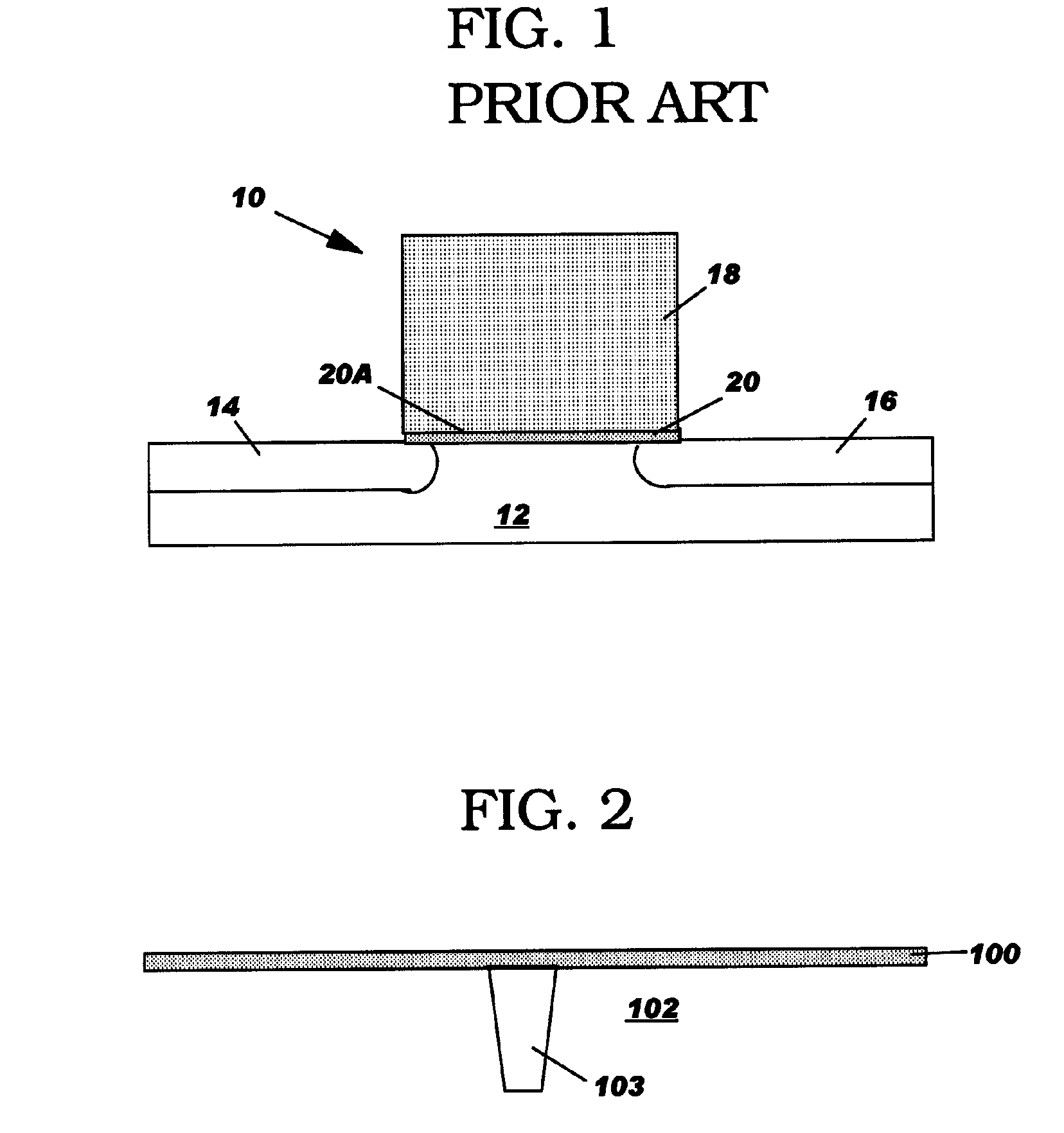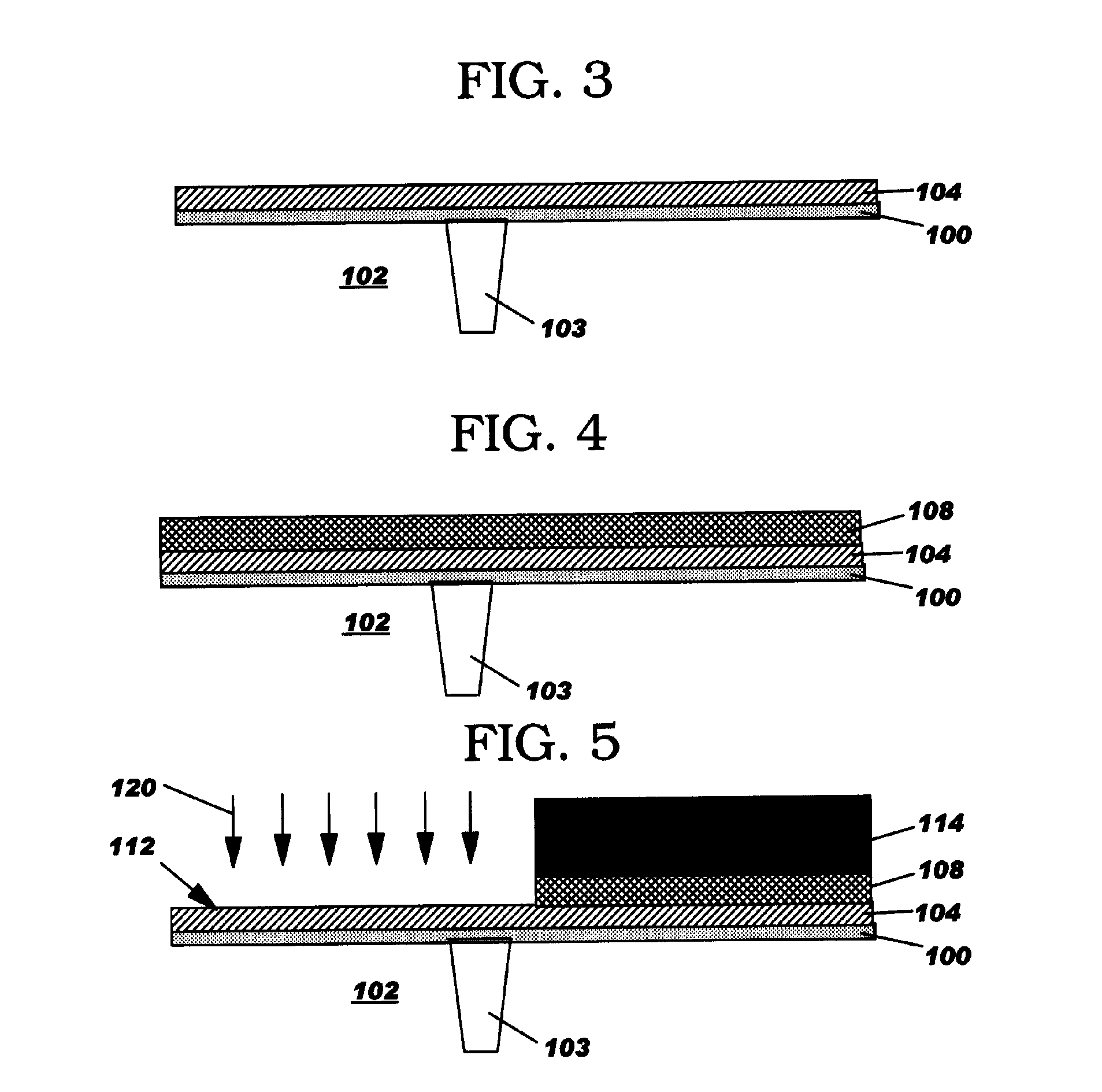Gate electrode forming methods using conductive hard mask
a gate electrode and hard mask technology, applied in the direction of semiconductor devices, basic electric elements, electrical equipment, etc., can solve the problems of gate leakage current becoming unacceptably high, reducing the capacitance of the gate, and affecting the device performance, so as to prevent the process from damage
- Summary
- Abstract
- Description
- Claims
- Application Information
AI Technical Summary
Benefits of technology
Problems solved by technology
Method used
Image
Examples
Embodiment Construction
[0019] With reference to the accompanying drawings, the invention will be described in terms of a method for creating a metal gate electrode with multiple work functions. It should be recognized, however, that other inventive methods are included within this method, as denoted by the appended claims.
[0020] Referring to FIG. 2, in a first step of the method, a dielectric 100 is formed upon a substrate 102, which may include shallow trench isolation (STI) 103. Substrate 102 can also include other useful structures which are not essential to the instant invention and not shown for clarity. Such useful structures may include but are not limited to: buried dielectric layers and buried interconnects, memory cells, trench capacitors, and stress inducing layers and structures. Dielectric 100 may be deposited in any now known or later developed fashion such as by a combination of thermal nitridation and oxidation, or an atomic layer deposition (ALD). Dielectric 100 may include any conventio...
PUM
| Property | Measurement | Unit |
|---|---|---|
| thickness | aaaaa | aaaaa |
| physical thickness | aaaaa | aaaaa |
| thickness | aaaaa | aaaaa |
Abstract
Description
Claims
Application Information
 Login to View More
Login to View More - R&D
- Intellectual Property
- Life Sciences
- Materials
- Tech Scout
- Unparalleled Data Quality
- Higher Quality Content
- 60% Fewer Hallucinations
Browse by: Latest US Patents, China's latest patents, Technical Efficacy Thesaurus, Application Domain, Technology Topic, Popular Technical Reports.
© 2025 PatSnap. All rights reserved.Legal|Privacy policy|Modern Slavery Act Transparency Statement|Sitemap|About US| Contact US: help@patsnap.com



